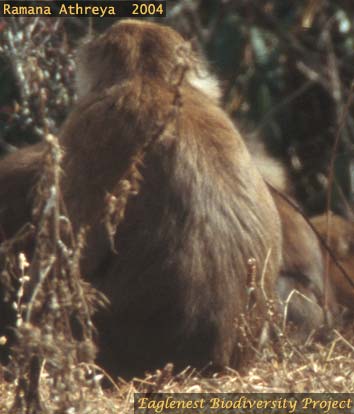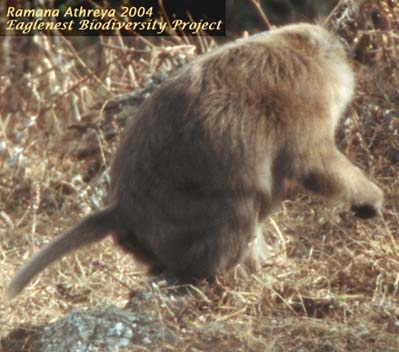|
|
|
The Arunachal Macaque (Macaca munzala)by Ramana AthreyaPage content :Description of the Macaque Images of the Macaque References A Monkey TaleThe Arunachal Macaque, Macaca munzala, was dicovered by science, in the form of a team of biologists from the Nature Conservation Foundation , only in 2003 during an expedition to the high altitude regions of W. Arunachal Pradesh. The previous "new" macaque has been known to science for more than a hundred years and the last new primate description was of the Golden Langur in 1956 from Assam, not more than 150 km from the site of the latest discovery. That a mammal which is neither particularly small nor particularly retiring and is reasonably distinctive had to await till 2003 to enter scientific journals is an indication of how poorly explored the fauna of the area is.The Arunachal Macaque is closely related to the Assamese Macaque. Though the new macaque has a suite of characters which are quite distinctive animals which seem to be hybrids between the two species may be seen around Jang in Tawang. Scientists are still working out the precise taxonomic relationship and the extent of the superficial differences between them. The pink spectacles against a dark face, the orange-buff crown patch with a dark wedge through it, and the short tail seen in the photographs all point towards the Arunachal Macaque. Some of the other points of distinction are the strikingly prognathous skull, the prominent ruff (white in the above winter photographs and orange-buff in many individuals in October) and dense white fur on the underside. The back of the animal in one of the images is paler than what was seen on many individuals (of the same and other troops) and more reminiscent of the Assamese. It remains to be seen if the paleness is an indication of admixture or is part of the normal variation within the species or a seasonal change - it was my impression that the animals seen in October were much darker than those of December References1. Mishra C., Datta A., & Madhusudan M.D. (2004)2. Sinha, A. & Mishra C. (pers. comm)   (top)
13 March 2005
Kaati Trust, Pune |
|||||||||||||||||||||||||||||||||||||||||||||||||||||||||||||||||||